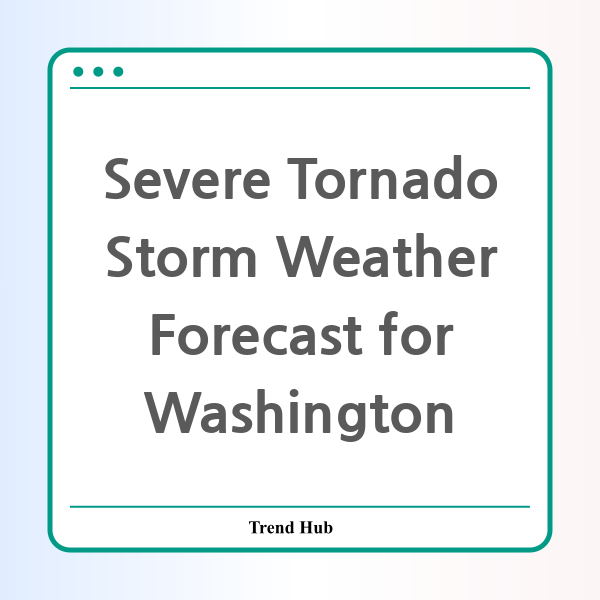* This website participates in the Amazon Affiliate Program and earns from qualifying purchases.

Are you prepared for the storms rolling into western Washington this Wednesday? As meteorological conditions collide, a thunderstorm threat looms large, bringing with it the potential for severe weather, including tornadoes and large hail. Let’s dive into what you can expect and how to stay safe during this turbulent weather.
The National Weather Service (NWS) has reported that warm, unstable air will lead to widespread thunderstorms in western Washington from Wednesday afternoon into the night. With temperatures unseasonably warm, peaking in the 60s, and a cold front progressing into the region, the conditions are ripe for severe weather.
### What to Expect During the Storm
The forecast indicates a range of severe weather phenomena including:
- Thunderstorms: Starting around 4 p.m. and continuing until approximately 10 p.m., the likelihood of thunderstorms will increase significantly.
- Large Hail: There’s a considerable risk of hail, with the potential for stones larger than 1 inch in diameter, particularly along the I-5 corridor from Everett to Oregon. The threat escalates with about a 15-29% chance for severe hail exceeding 1 inch.
- Wind Gusts: Wind gusts could reach up to 58 mph, bringing a 14% chance of severe winds across western Washington.
- Tornado Risk: Most alarming, there is a 2-4% chance for tornado activity along the I-5 corridor, necessitating preparedness and awareness.
Historically, large hail is not a common occurrence in the Pacific Northwest, but recent forecasts suggest that a few storms may generate significant hail sizes, potentially reaching 2-2.5 inches. In fact, the largest hailstones recorded in Oregon and western Washington have been quite impressive, with records of up to 4 inches in diameter.
### Understanding Thunderstorm Formation
Ever wonder how thunderstorms form? According to the National Oceanic and Atmospheric Administration (NOAA), three basic ingredients are necessary:
- Moisture: Essential for cloud formation, moisture will be abundant as warm air rises.
- Unstable Air: As the warm air ascends, instability is created, leading to rising columns of air.
- Lift: Some mechanism, such as a cold front, nudges the air upwards.
As the warm air rises, it cools, condensing into clouds that can generate thunderstorms. A series of collisions between ice particles can create the electric charges that result in lightning, accompanied by thunder. Understanding this process provides insight into the fierce storms that may impact our lives.
### Preparing for Severe Weather
With the heightened potential for severe weather, it’s vital to revisit your safety plans. Remember the following:
- Have a designated safe space, ideally in a basement or an interior room with no windows.
- Stay indoors during storms and away from windows and external walls.
- Keep informed by staying tuned to local weather updates.
Even if the storms pass quickly, the aftermath could bring challenges, including flooding from heavy rainfall. Therefore, being forewarned is being forearmed.
As this weather system approaches, we advise the public to stay alert and prepared. Together, we can navigate the potential storms safely. The KOIN weather team will continue to provide updates as the situation develops. Stay safe, and take all necessary precautions!
* This website participates in the Amazon Affiliate Program and earns from qualifying purchases.